Vtg Outsider Pop Art Acrylic Painting Dj MID Century Modern Retro Va Expression
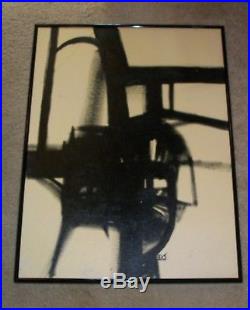
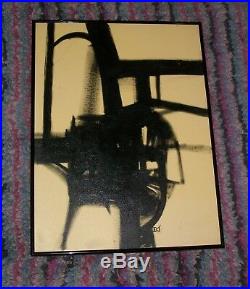
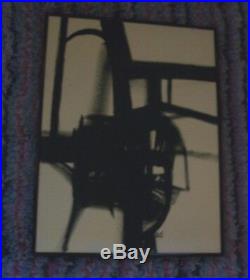
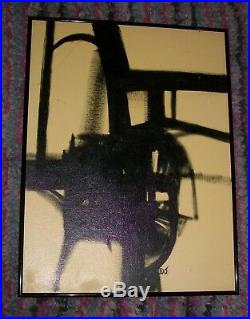
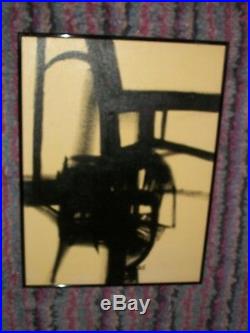
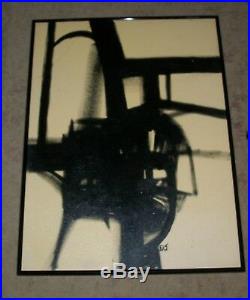
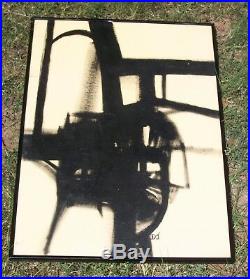

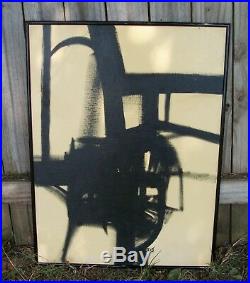
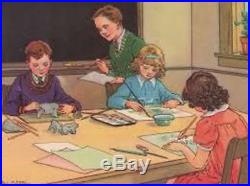
VTG OUTSIDER POP ART ACRYLIC PAINTING DJ MID CENTURY MODERN RETRO VA EXPRESSION. We welcome any comments, questions, or concerns.
WE ARE TARGETING A GLOBAL MARKET PLACE. Thanks in advance for your patronage. Please Be sure to add WDG to your. NOW FOR YOUR VIEWING PLEASURE."LIGHTS & DARKS" or "DIFFERENT STROKES" VINTAGE SIGNED ART BY ARTISAN "DJ" ABSTRACT POP EXPRESSION ACRYLIC ON CANVAS BLACK METAL FRAME MEASURES ABOUT 18" X 24" MID CENTURY MODERN DECOR. The term outsider art was coined by art critic Roger Cardinal in 1972 as an English synonym for art brut (French: [a byt], "raw art" or "rough art"), a label created by French artist Jean Dubuffet to describe art created outside the boundaries of official culture; Dubuffet focused particularly on art by those on the outside of the established art scene, such as psychiatric hospital patients and children. While Dubuffet's term is quite specific, the English term "outsider art" is often applied more broadly, to include certain self-taught or naïve art makers who were never institutionalized.
Typically, those labeled as outsider artists have little or no contact with the mainstream art world or art institutions. In many cases, their work is discovered only after their deaths.
Often, outsider art illustrates extreme mental states, unconventional ideas, or elaborate fantasy worlds. Outsider art has emerged as a successful art marketing category; an annual Outsider Art Fair has taken place in New York since 1993, and there are at least two regularly published journals dedicated to the subject. The term is sometimes misapplied as a catch-all marketing label for art created by people who are outside the mainstream "art world" or "art gallery system", regardless of their circumstances or the content of their work. Interest in the art of the mentally ill, along with that of children and the makers of "peasant art", was first demonstrated by "Der Blaue Reiter" group: Wassily Kandinsky, Auguste Macke, Franz Marc, Alexej Jawlensky, and others. What the artists perceived in the work of these groups was an expressive power born of their perceived lack of sophistication.Examples of this were reproduced in 1912 in the first and only issue of their publication, Der Blaue Reiter Almanac. During World War I, Macke was killed at Champagne in 1914 and Marc was killed at Verdun in 1916; the gap left by these deaths was to some extent filled by Paul Klee, who continued to draw inspiration from these'primitives'.
Interest in the art of insane asylum inmates continued to grow in the 1920s. Walter Morgenthaler published his book Ein Geisteskranker als Künstler (A Psychiatric Patient as Artist) about Adolf Wölfli, a psychotic mental patient in his care. Wölfli had spontaneously taken up drawing, and this activity seemed to calm him. His most outstanding work was an illustrated epic of 45 volumes in which he narrated his own imaginary life story. With 25,000 pages, 1,600 illustrations, and 1,500 collages, it is a monumental work. His work is on display at the Adolf Wölfli Foundation in the Museum of Fine Art, Bern. A defining moment was the publication of Bildnerei der Geisteskranken (Artistry of the mentally ill) in 1922, by Dr. This was the first formal study of psychiatric works, based upon a compilation of thousands of examples from European institutions. The book and the art collection gained much attention from avant-garde artists of the time, including Paul Klee, Max Ernst, and Jean Dubuffet. People with some formal artistic training as well as well-established artists are not immune from mental illness, and may also be institutionalised. For example, William Kurelek, later awarded the Order of Canada for his artistic life work, as a young man was admitted to the Maudsley Psychiatric Hospital where he was treated for schizophrenia.In hospital he painted, producing The Maze, a dark depiction of his tortured youth. He was transferred from the Maudsley to Netherne Hospital from November 1953 to January 1955, to work with Edward Adamson (19111996), a pioneer of art therapy, and creator of the Adamson Collection. Jean Dubuffet and art brut. French artist Jean Dubuffet was particularly struck by Bildnerei der Geisteskranken and began his own collection of such art, which he called art brut or raw art.
In 1948 he formed the Compagnie de l'Art Brut along with other artists, including André Breton. The collection he established became known as the Collection de l'art brut.
It contains thousands of works and is now permanently housed in Lausanne, Switzerland. The interest in "outsider" practices among twentieth-century artists and critics can be seen as part of a larger emphasis on the rejection of established values within the modernist art milieu. The early part of the 20th century gave rise to Cubism and the Dada, Constructivist and Futurist movements in art, all of which involved a dramatic movement away from cultural forms of the past. Dadaist Marcel Duchamp, for example, abandoned "painterly" technique to allow chance operations a role in determining the form of his works, or simply to re-contextualize existing "readymade" objects as art. Mid-century artists, including Pablo Picasso, looked outside the traditions of high culture for inspiration, drawing from the artifacts of "primitive" societies, the unschooled artwork of children, and vulgar advertising graphics.
Dubuffet's championing of the art brut of the insane and others at the margins of society is yet another example of avant-garde art challenging established cultural values. Two images of Joe Minter's African Village in America, a half-acre visionary art environment in Birmingham, Alabama. Scenes include African warriors watching their descendants struggles in Alabama, tributes to black scientists and military leaders, recreations of the epic civil rights confrontations in Alabama, and biblical scenes. A number of terms are used to describe art that is loosely understood as "outside" of official culture. Definitions of these terms vary and overlap. The editors of Raw Vision, a leading journal in the field, suggest that "Whatever views we have about the value of controversy itself, it is important to sustain creative discussion by way of an agreed vocabulary". Consequently, they lament the use of "outsider artist" to refer to almost any untrained artist. It is not enough to be untrained, clumsy or naïve. Outsider Art is virtually synonymous with Art Brut in both spirit and meaning, to that rarity of art produced by those who do not know its name. Art Brut: literally translated from French means "raw art";'Raw' in that it has not been through the'cooking' process: the world of art schools, galleries, museums. Originally art by psychotic individuals who existed almost completely outside culture and society. Strictly speaking it refers only to the Collection de l'art brut. Folk art: Folk art originally suggested crafts and decorative skills associated with peasant communities in Europe though presumably it could equally apply to any indigenous culture.It has broadened to include any product of practical craftsmanship and decorative skill everything from chain-saw animals to hub-cap buildings. A key distinction between folk and outsider art is that folk art typically embodies traditional forms and social values, where outsider art stands in some marginal relationship to society's mainstream. Intuitive art / Visionary art: Raw Vision Magazine's preferred general terms for outsider art. It describes them as deliberate umbrella terms. However, Visionary Art unlike other definitions here can often refer to the subject matter of the works, which includes images of a spiritual or religious nature.
Intuitive art is probably the most general term available. Intuit: The Center for Intuitive and Outsider Art based in Chicago operates a museum dedicated to the study and exhibition of intuitive and outsider art. The American Visionary Art Museum in Baltimore, Maryland is dedicated to the collection and display of visionary art. Marginal art/Art singulier: Essentially the same as Neue Invention; refers to artists on the margins of the art world. Naïve art: Another term commonly applied to untrained artists who aspire to "normal" artistic status, i.They have a much more conscious interaction with the mainstream art world than do outsider artists. Neuve invention: Used to describe artists who, although marginal, have some interaction with mainstream culture.
They may be doing art part-time for instance. The expression was coined by Dubuffet too; strictly speaking it refers only to a special part of the Collection de l'art brut. Visionary environments: Buildings and sculpture parks built by visionary artists range from decorated houses, to large areas incorporating a large number of individual sculptures with a tightly associated theme. Examples include Watts Towers by Simon Rodia, Buddha Park and Sala Keoku by Bunleua Sulilat, and The Palais Ideal by Ferdinand Cheval. (THIS PICTURE FOR DISPLAY ONLY). Please leave feedback when you have received the item and are satisfied. Our goal is for 5-star service. We want you to be a satisfied, return customer. Please express any concerns or questions. More pictures are available upon request. Please Check out our other items. WE like the curious and odd.Auctiva offers Free Image Hosting and Editing. The item "VTG OUTSIDER POP ART ACRYLIC PAINTING DJ MID CENTURY MODERN RETRO VA EXPRESSION" is in sale since Friday, January 18, 2019. This item is in the category "Art\Paintings".
The seller is "cbenhob" and is located in Jenks, Oklahoma. This item can be shipped worldwide.
- Size: Medium (up to 36in.)
- Artist: DJ
- Listed By: Dealer or Reseller
- Painting Surface: Canvas
- Medium: Acrylic
- Date of Creation: 1970-1989
- Features: Framed
- Subject: Abstract
- Originality: Original